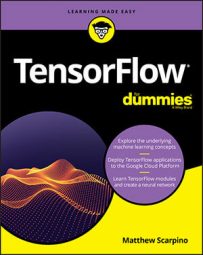To build a GCP project that can access the ML Engine, you need to perform three steps:
- Create a project in the Google Developer Console.
- Enable billing for the project.
- Enable the project to access the Machine Learning Engine.
Creating a new project
Anyone with a valid email address can create a GCP project without any fees or obligations. The process involves five steps:- Visit the Cloud Console.
- If this is your first time visiting the console, provide a contact email address and a password.
- In the upper horizontal bar, click Select a Project.
- In the Select dialog box, click the plus button on the right.
- In the New Project page, enter a project name and click the Create button.
In contrast, a project’s ID is chosen by the GCP based on the project’s name, and it uniquely identifies the project across all projects in the GCP. If you want to upload code or change a project's configuration, you’ll need to access your project by its ID. Therefore, it’s a good idea to know the IDs of your projects.
Billing
Machine learning is a powerful capability, but unlike TensorFlow, it’s not free. Google’s fees for machine learning depend on three factors: the type of operation (training or prediction), the length of time, and your location:- Training: $0.49 per hour per training unit in the U.S., $0.54 in Europe and Asia
- Prediction: $0.10 per thousand predictions plus $0.40 per hour in the U.S., $0.11 per thousand predictions plus $0.44 per hour in Europe and Asia
- Visit your project page in the Cloud Console.
- Open the menu (three horizontal bars) in the upper-left and select the Billing option.
- Click the button entitled Add billing account.
- Enter your contact information and billing information.
Accessing the machine learning engine
After you set up a billing account for your project, you can access paid features like the ML Engine. To enable this feature, open the menu in the upper-left of the project page and select APIs & Services. This opens the APIs & Services page, which identifies the features that the project can access.The left side of the page displays three links: Dashboard, Library, and Credentials. The Library link opens a page that lists the APIs available for your project. To enable access to the ML Engine, you need to perform five steps:
- From the APIs & Services page, click the Library link to the left.
- Find the Machine Learning group and click the View All link to the right.
- Click the link entitled Google Cloud Machine Learning Engine.
- Click the Enable link at the top of the page.
- Wait until the GCP grants access to the new capability.

